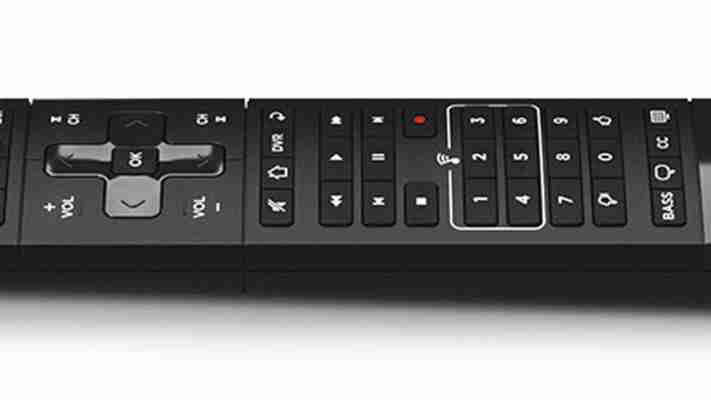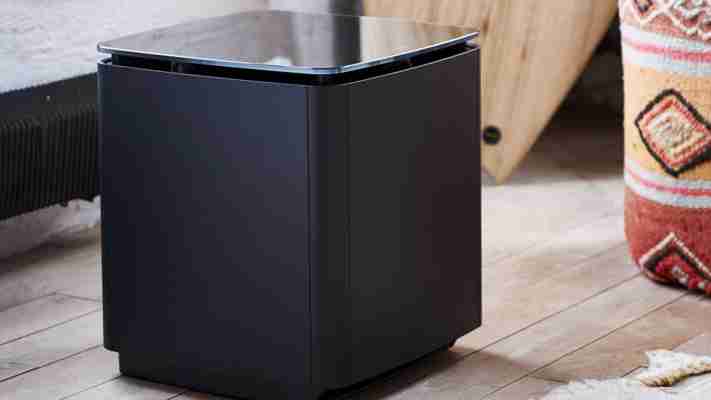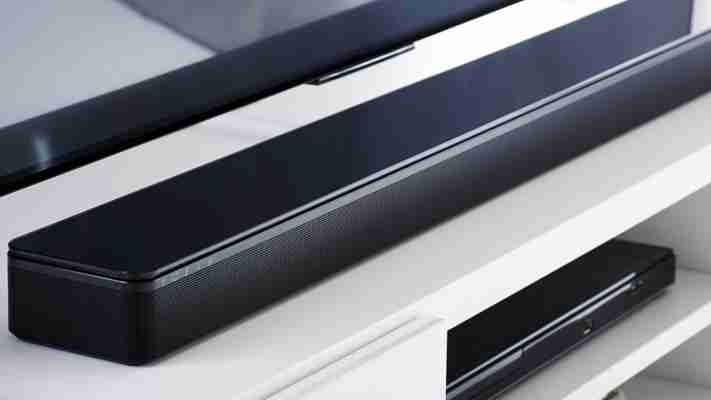Would you spend £600 on a soundbar? That’s the question Bose wants you to answer with a resounding YES, because that’s how much its new premium soundbar costs. The Bose SoundTouch 300 is a hefty £600. On its own. Without a subwoofer, or rear channel speakers.
Such is the weight of reputation the brand has gained over the years – in particular from its noise-cancelling headphone range – that I’m reasonably sure plenty of people will shrug their shoulders and accept the price simply because of the brand.
Is it worth it? For the majority of people, probably not. For £600 or less, there are plenty of other systems that offer comparable sound quality and include a subwoofer. The Philips Fidelio B5, for instance, offers the full package with wireless sub and satellite speakers for around £650. The Samsung HW-K650 costs £360 and delivers great sound quality and a subwoofer for deeper bass.
Then there’s a selection of soundbase products for those who want a one-box solution but don’t want to sacrifice sound quality. The Sony HT-XT3 , for instance, offers huge sound for £365.
Image 3 of 6
Bose SoundTouch 300 review: Sound quality
Bose’s counterpoint is that, thanks to its audio-engineering expertise, the SoundTouch 300 is capable of providing the surround sound and bass to match multi-box rivals, without the hassle of having to find space in the living room for extra speakers.
And the SoundTouch 300 is certainly packed with tech. For surround sound, it employs directional Phase Guide speakers, two of which are hidden behind the soundbar’s perforated, wraparound grille. Bass is enhanced by way of folded bass reflex ports with slots cut into the sides. Bose calls this QuietPort technology, but the idea behind it is pretty simple: to reduce port turbulence and thus keep distortion to a minimum so you can appreciate the boom and rumble of movie soundtracks at any volume.
It’s all drawn together with the firm’s ADAPTiQ calibration tech, which tweaks the EQ to suit your room and seating positions to prevent the buildup of standing waves and the like. This is easy to set up: simply plug the supplied microphone-equipped headset into the back of the soundbar, follow the audio instructions, and the soundbar will beam a series of tones at you while you sit in a variety of listening positions around the room. The whole process takes little longer than a few minutes.
Does it all work, though? To a certain extent, yes. On its own, the SoundTouch 300 produces an impressively wide soundstage, spreading surround effects left and right, and delivering a tangible sense of space. What you don’t get, or at least I didn’t in the room I tested it in, is any sense of the sound surrounding you.
The way it sounds takes a little getting used to as well. There’s an odd character to the treble – a colouration of the sound – that makes high notes sound slightly nasal. Presumably, this is some byproduct of the SoundTouch 300’s Phase Guide technology, but it’s noticeable nonetheless.
It’s not unpleasant, though, and in general, I enjoyed my time with the SoundTouch 300. It delivered movie soundtracks and music with an authority and ease that makes it very easy to listen to. There’s plenty of clarity and weight of bass, and voices are clear and easy to make out.

I’d put the sound quality in the competent rather than thrilling category, however, because it doesn’t excite or involve the listener in the way some other soundbars do. In particular, I’d like more atmospherics, dynamics and texture. And the bass, while impressive for a soundbar this size, can’t match a soundbar and subwoofer pairing, or a good-quality soundbase.
The optional Acoustimass 300 subwoofer changes this picture dramatically, with movie soundtracks and music taking on tremendous punch and dynamic range. Bose’s Virtually Invisible 300 wireless satellite speakers add breadth and a full sense of being enveloped in sound, but together these optional extras add another £850 to the price, which raises the cost to a level even higher than Samsung’s HW-K950 Atmos soundbar.
Bose SoundTouch 300 review: Connectivity and software
I’d expect better sound quality for the money, but there’s much to be said for the way Bose has put together the SoundTouch 300, both from a design and software perspective.
The glass top and long, low-slung design is both practical and gorgeous to look at. It’s quite wide at 98cm width, which means it’s best used with TVs that are at least 49in in size, but since it’s only 57mm high it shouldn’t get in the way of either the screen or your TV’s remote-control reception.
At the rear of the soundbar, hidden away in two recessed cubby holes, are located all the system’s physical connections, and the selection is decent. There’s a pair of HDMI ports, one for connection to your TV and ARC-enabled so your TV can send audio back down the line, the other 4K passthrough enabled for a degree of future proofing.
There’s also an optical S/PDIF input here, an Ethernet socket, and a pair of 3.5mm jacks – one for connecting the optional Acoustimass 300 (£600) subwoofer, the other for the ADAPTiQ calibration headset.

As for wireless connectivity, that’s covered by Bluetooth and Wi-Fi, and as you’d expect of a modern wireless speaker there’s an accompanying app that lets you change settings, update firmware and manage the SoundTouch 300 as part of Bose’s SoundTouch multiroom speaker system.
I like the app. It looks slick; incorporates music services such as Amazon Music, Spotify, Deezer and SiriusXM internet radio; and allows the playback of files stored on DLNA-based network drives. Once you’ve added your account details, there’s no need to leave the app, since everything is built right in, although you can switch over to the Spotify app if you prefer.
The downside is that Bose’s approach is rather single-minded, so you can’t go beyond this rather limited selection. There’s no Apple AirPlay or Google Cast support to fill in the gaps should you want to use any other music or audio service. Plus, at the time of writing, the Amazon Music integration wasn’t yet working.

Bose SoundTouch 300 review: Verdict
I like the Bose SoundTouch 300’s impressive body and scale, and I love the design of the soundbar itself, but its high price, lack of wireless streaming flexibility and middling sound quality (at least on its own) mean it’s not the best soundbar you can buy for the money.
For this sort of cash you can land yourself a very decent soundbar and subwoofer setup, a soundbase, or even a full wireless surround setup such as the Philips Fidelio B5 , which not only gives you a wireless subwoofer but also completely wireless, battery-powered satellite speakers. It’s good, but not good enough.
